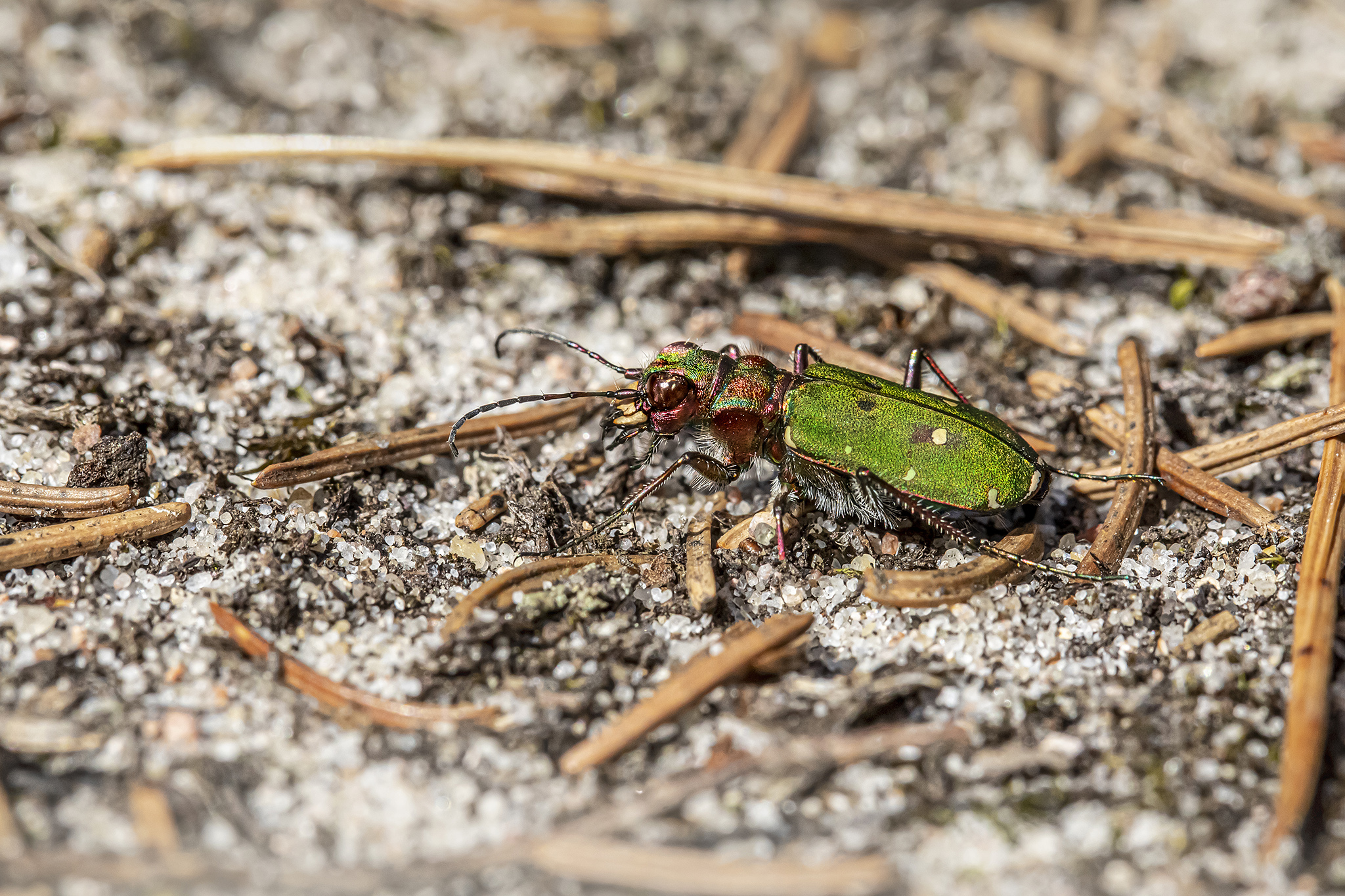Cicindela campestris, commonly known as the Green Tiger Beetle, is a striking and agile insect species belonging to the family Carabidae. Here’s a detailed description:
Physical Characteristics: The Green Tiger Beetle is known for its vibrant metallic green coloration, which covers its entire body and gives it a jewel-like appearance. Its elongated, slender body is typically around 10 to 14 millimeters in length, with large, bulging eyes that provide excellent vision for hunting.
Habitat and Distribution: This species is widely distributed across Europe and parts of Asia, inhabiting a variety of open habitats such as grasslands, heathlands, sand dunes, and coastal areas. It prefers sunny, sparsely vegetated areas with loose, sandy soil, where it can easily dig burrows and hunt for prey.
Behavior and Ecology: The Green Tiger Beetle is a voracious predator, preying primarily on small insects, spiders, and other invertebrates. With its exceptional speed and agility, it pursues its prey on foot, using its powerful jaws to capture and immobilize its victims.
These beetles are diurnal, meaning they are active during the day, especially on warm, sunny days when temperatures are conducive to their activity. They are known for their rapid and erratic flight patterns, often darting low to the ground in search of prey or mates.
Reproduction: During the breeding season, which typically occurs in the spring and summer months, male Green Tiger Beetles establish territories and engage in territorial disputes to attract females. Mating occurs on the ground, with females laying their eggs in small burrows dug into sandy soil.
Larval Development: The larvae of Green Tiger Beetles are predatory and live in burrows dug into the ground. They have specialized mandibles adapted for grasping and devouring prey, primarily small insects and larvae. Larvae undergo several stages of development before pupating and eventually emerging as adult beetles.
Conservation Status: While the Green Tiger Beetle is not considered globally threatened, it may face localized threats due to habitat loss and degradation caused by human activities such as agriculture, urbanization, and recreational land use. Conservation efforts focused on preserving and restoring suitable habitats are essential for maintaining healthy populations of this stunning beetle species.
Overall, the Green Tiger Beetle is a fascinating and ecologically important insect, admired for its beauty, agility, and predatory prowess in the natural world.
Views: 3
Subscribe to the newsletter:
